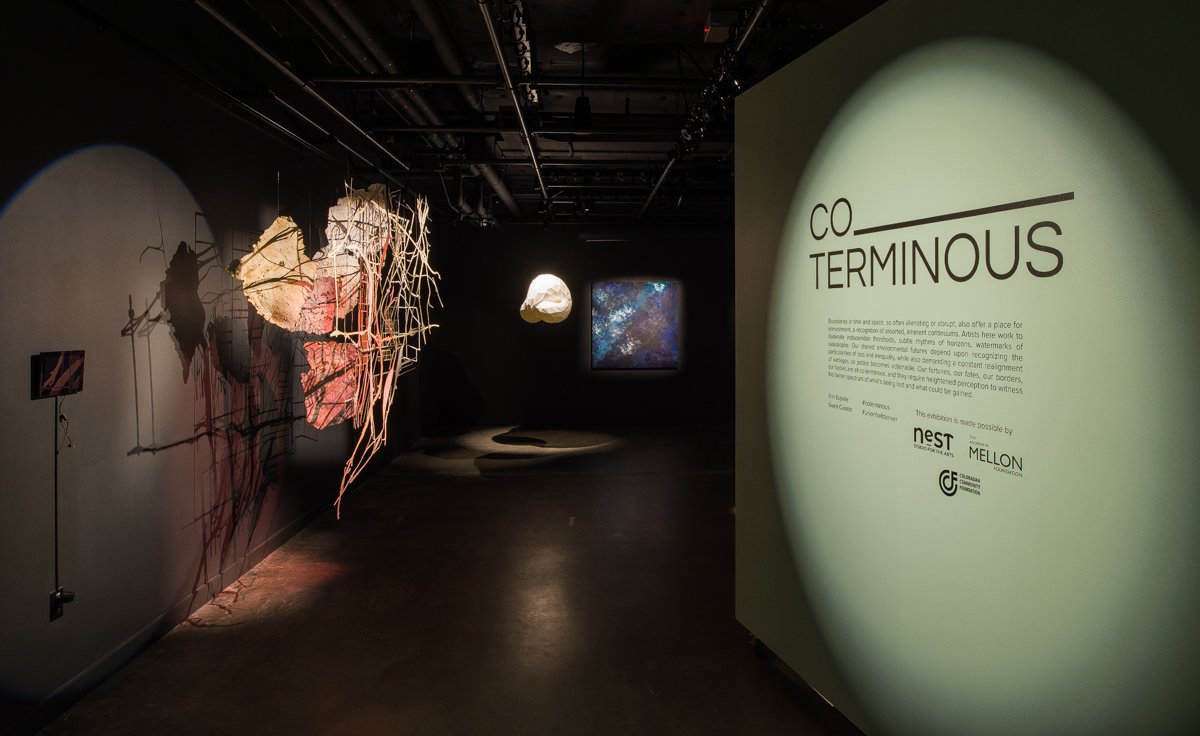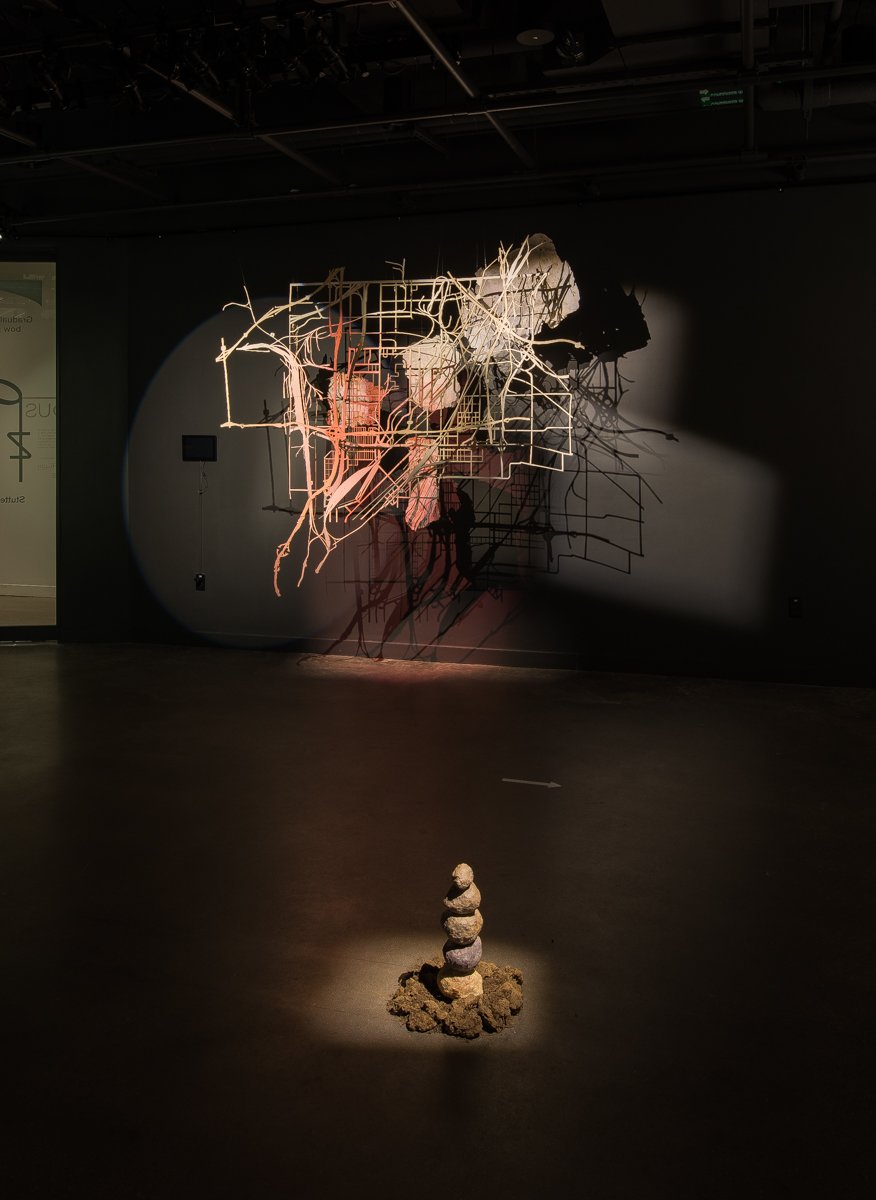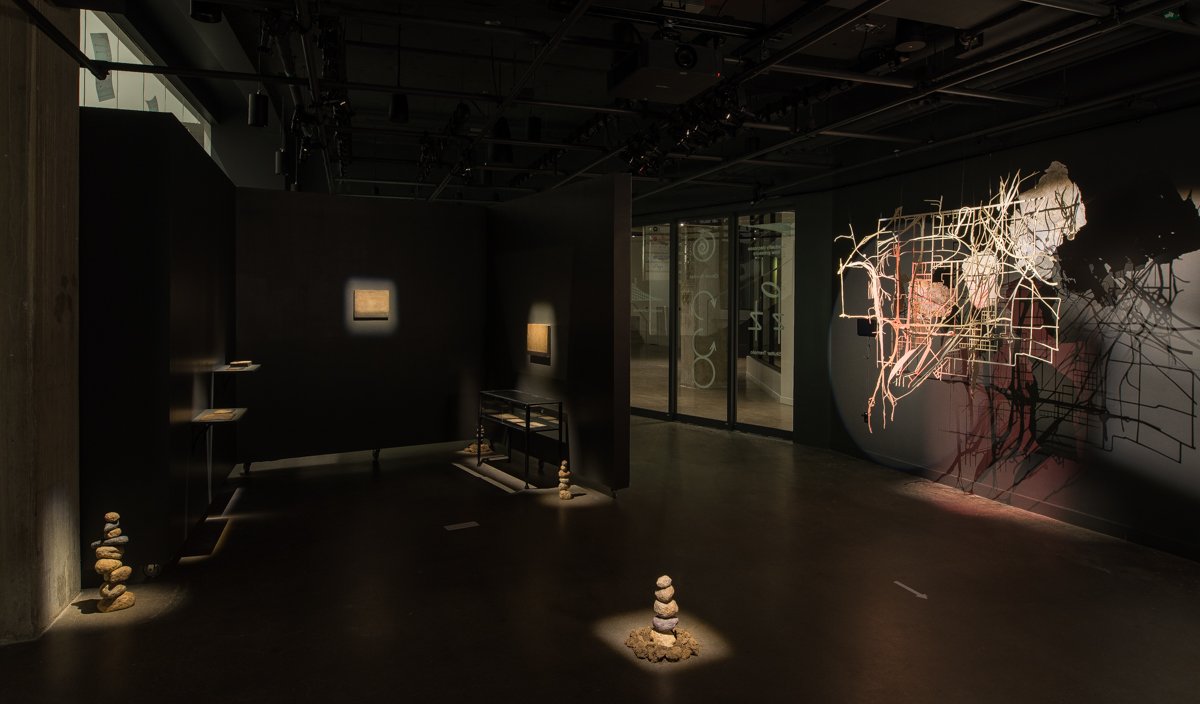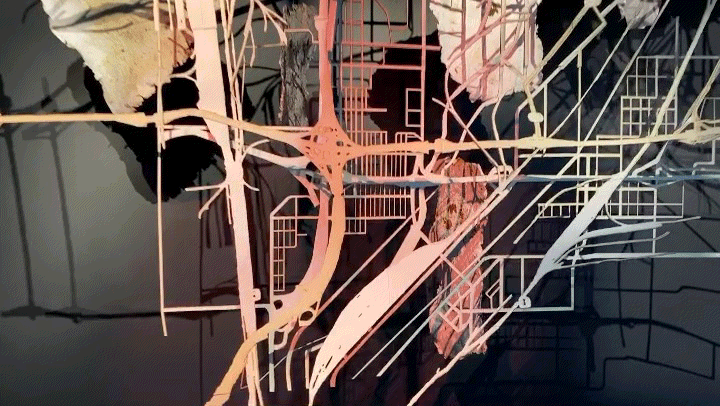




BIOME VS. BORDERS,
Union Hall, Denver, CO
BIOME vs BORDERS is a site-specific art piece at Union Hall, which focuses on the proximity of Union Hall to one the most polluted zipcodes in the North Denver area, Globeville. The material gathered from Globeville is reclaimed and made into new layers of paper. The paper is assembled to reference the dissection of a map of the area, emphasizing features that connect Globeville to other surrounding areas in the Denver area, from train tracks, waterways, highways, and pipe systems (some of which are known to have traces of lead). The pollution in the area dates back to 1800, when smelting plants left behind hazardous materials. The long history of harsh chemicals that polluted this area, which was home to immigrants and still is a lower income area, is especially tragic in light of the fact that it continues to relate to racial inequities. Many sites within Globeville were deleted from the EPA’s superfund list, and now some of these sites are in reuse after environmental rehabilitation. The work is inspired by several maps and visualizations of the area, such as health equity, heat maps, Denver railroads, and hazard indexes that demonstrate the ongoing impact of contamination.
Since the Co-Terminous exhibition addresses borders, this work explores how the concept of borders relates to zip codes – particularly given how hazardous materials of one region can connect to the land and waterways of other nearby areas. Biomes do not care about our arbitrary and human-defined borders, so the notion that we are safe in one area is all in the imagination, since everything is interconnected. Yet the economic aspects of these human-defined borders, especially as they relate to inequalities, show the real-world impacts of borders on the working class.

